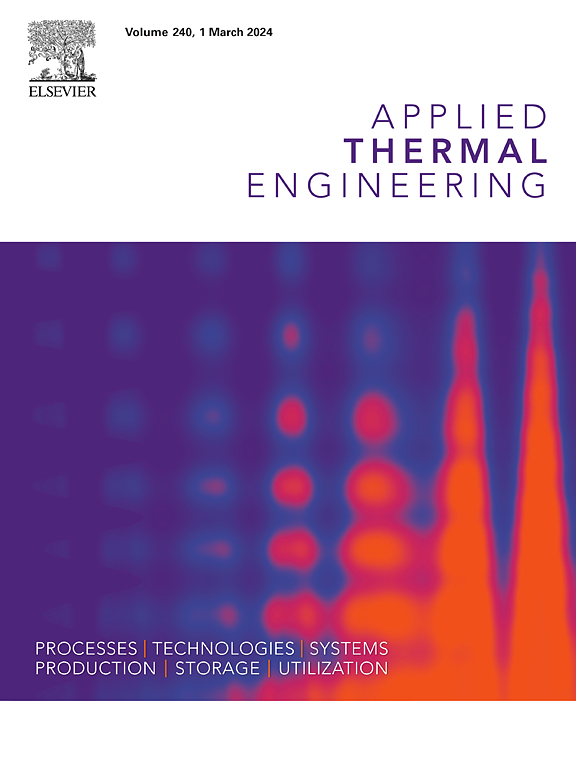扇贝仿生阻尼密封改善紧凑型涡轮机组转子轴向力和热管理的潜力
IF 6.9
2区 工程技术
Q2 ENERGY & FUELS
引用次数: 0
摘要
对于径向涡轮机械,作用在叶轮上的气动载荷对转子系统产生轴向力,这可能导致轴承过载失效。为了减小轴向力,提出了压气机与透平叶轮同轴对置的紧凑设计,但轴承过热问题仍然存在。在本研究中,为紧凑型涡轮压气机(T-C)装置设计了平衡活塞,并开发了扇贝仿生阻尼密封(SDS)作为活塞密封。高压流体流经平衡活塞和SDS之间的间隙,产生压差来平衡轴向力。节流泄漏流有助于降低下游轴承温度,改善T-C单元的热管理。实验研究了这种新设计在不同工况下改善T-C机组轴向力和热管理的潜力。结果表明,平衡活塞在T-C机组的启动和加速、变工况和设计工况以及非设计工况下均能有效提高轴向力。在4-6 MPa的进口压力下,来自SDS的泄漏流有利于降低下游轴承温度。定义了相对制冷量,对SDS和平衡活塞进行了分析,以改善T-C机组的热管理。本文章由计算机程序翻译,如有差异,请以英文原文为准。
Potential of scallop bionic damper seal to improve rotor axial force and thermal management in compact turbomachinery unit
For the radial turbomachinery, the aerodynamic loads acting on the impeller cause axial forces on the rotor system, which may lead to bearings overload failure. To reduce the axial force, a compact design with the compressor and turbine impellers coaxially opposed has been proposed, but the problem of bearing overheating still exists. In this research, a balance piston is designed for a compact Turbine-Compressor (T-C) unit, and the scallop bionic damper seal (SDS) is developed as the piston seal. The high-pressure fluid flows through the clearance between the balance piston and the SDS, creating the differential pressure to balance axial force. The throttled leakage flow facilitates the reduction of downstream bearing temperatures for improved thermal management of the T-C unit. The potential of this novel design to improve the axial force and thermal management of the T-C unit under different operating conditions is experimentally investigated. The results indicate that the balance piston can effectively improve the axial force under the start-up and speed-up, variable and design condition, and off-design condition of the T-C unit. Under inlet pressures of 4–6 MPa, the leakage flow from the SDS facilitates the lower downstream bearing temperatures. The relative cooling capacity is defined to analyze the SDS and balance piston to improve the thermal management of the T-C unit.
求助全文
通过发布文献求助,成功后即可免费获取论文全文。
去求助
来源期刊

Applied Thermal Engineering
工程技术-工程:机械
CiteScore
11.30
自引率
15.60%
发文量
1474
审稿时长
57 days
期刊介绍:
Applied Thermal Engineering disseminates novel research related to the design, development and demonstration of components, devices, equipment, technologies and systems involving thermal processes for the production, storage, utilization and conservation of energy, with a focus on engineering application.
The journal publishes high-quality and high-impact Original Research Articles, Review Articles, Short Communications and Letters to the Editor on cutting-edge innovations in research, and recent advances or issues of interest to the thermal engineering community.
 求助内容:
求助内容: 应助结果提醒方式:
应助结果提醒方式:


